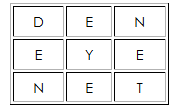
Nebraska is the 16th largest state by land area, covering just over 77,220 square miles. The state flower is the goldenrod and the state bird is the meadowlark. This Social Studies Enrichment post has you digging into Nebraska information and history.
1. Set up your social studies mini spark recording page: # 19: Learn about Nebraska
2. Visit these sites and find 10-15 pieces of information on your recording page about Nebraska. Try to look for details to record you did not already know.
https://www.50states.com/facts/nebraska.htm
https://www.factmonster.com/us/states/nebraska
3. Visit National Geographic Kids and read about Nebraska. Record at least one idea from each of the sections on this website. Look for information that you did not already know as you are writing information.
- HISTORY
- WHY’S IT CALLED THAT?
- GEOGRAPHY AND LANDFORM
- WILDLIFE
- NATURAL RESOURCES
- FUN STUFF
4. Create an interview between you and the state of Nebraska. Remind your teacher that the answers can be found in the social studies mini spark page.
Sample script
Reporter– Hello, Nebraska Thank you for agreeing to meet with me. What does the name “Nebraska” mean, and which river is it associated with?
Nebraska-Of course, thank you for the opportunity. The name “Nebraska” comes from Native American words meaning “flat water,” referring to the Platte River
You can use these question prompts or choose your own. Include at least 3 questions and answers.
- What evidence do archaeologists have that people have lived in Nebraska for at least 13,500 years?
- List three Native American tribes mentioned in the text that developed in Nebraska.
- What significant purchase did France make in 1803, and how did it affect Nebraska?
- Describe the route taken by some of the first settlers arriving in Nebraska. What challenges did they face?
- What does the name “Nebraska” mean, and which river is it associated with?
- Identify the two major regions of Nebraska mentioned in the text and describe one characteristic of each.
- How did the melting glaciers contribute to the geography of the Dissected Till Plains?
- What types of wildlife are mentioned as common in Nebraska, and which species is noted for being rare?
- How does the High Plains Aquifer contribute to Nebraska’s agriculture?
- What is Carhenge, and how does it compare to England’s Stonehenge?
5. Share your social studies mini spark recording page with your teacher/EY coordinator
 Dive in to this building challenge? Grab some straws and tape and get started! With just these two materials, you can create amazing structures.
Dive in to this building challenge? Grab some straws and tape and get started! With just these two materials, you can create amazing structures.

 Learn how to make a really fun geometric toy—a Hexaflexagon! There are many types of flexagons. The names of flexagons tell the type of polygon and the number of faces.
Learn how to make a really fun geometric toy—a Hexaflexagon! There are many types of flexagons. The names of flexagons tell the type of polygon and the number of faces. 










 Learn how to sign animal names in this early enrichment mini spark.
Learn how to sign animal names in this early enrichment mini spark.
